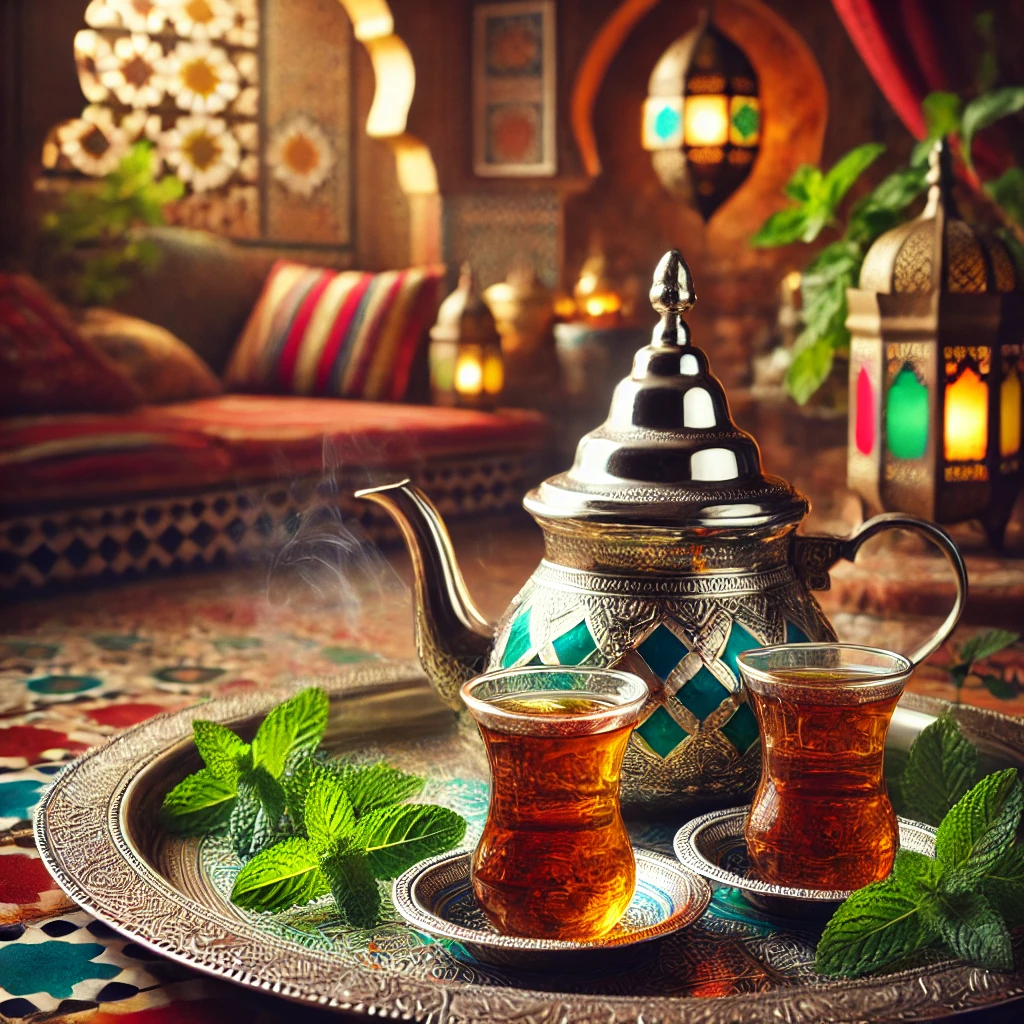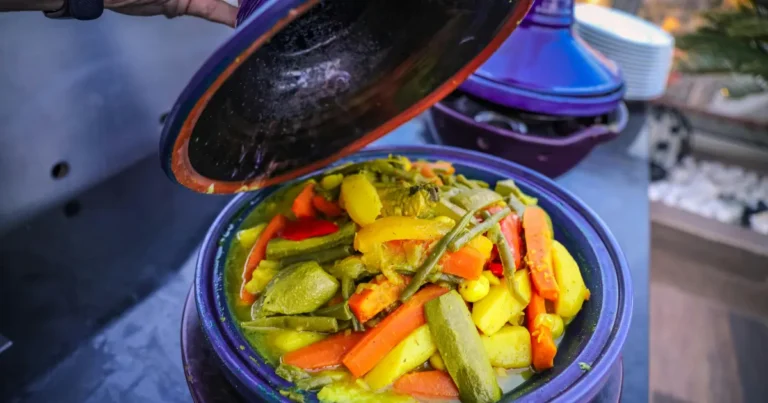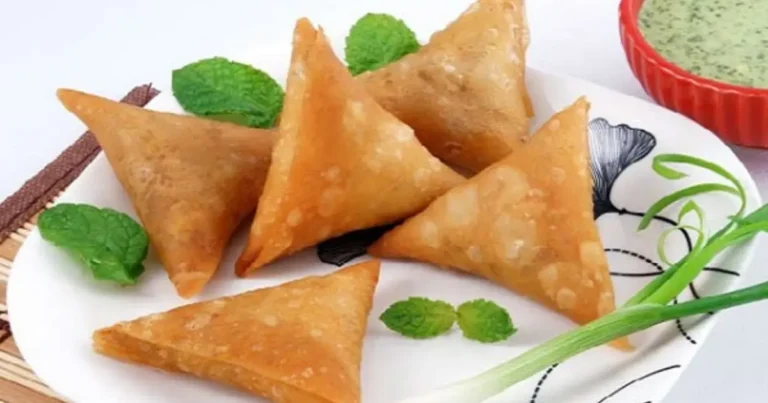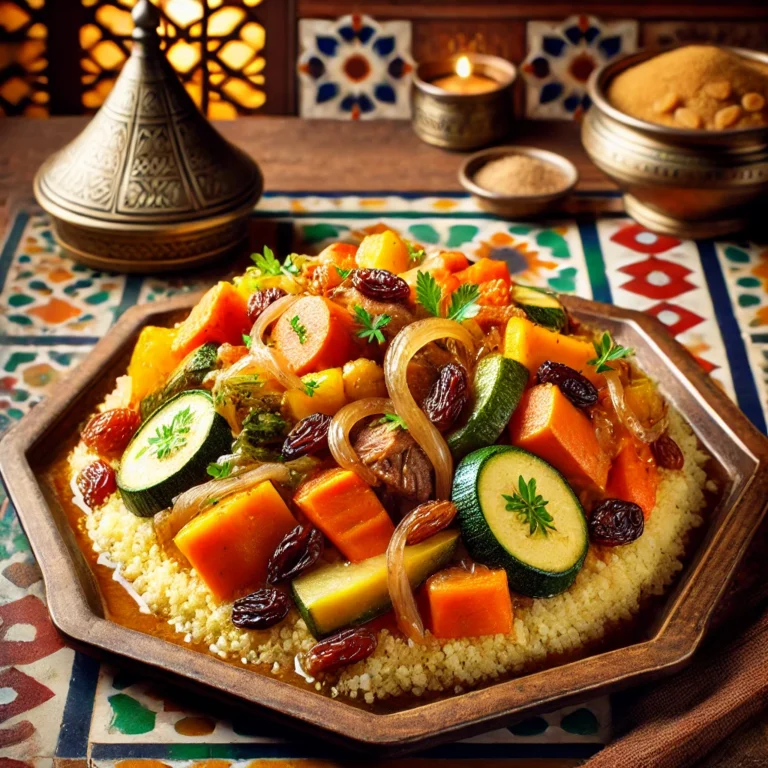Moroccan Mint Tea: A Symbol of Hospitality and Tradition
Introduction: A Sip of Tradition, A Taste of Warmth
Imagine entering a sunlit courtyard in Morocco, where the rich scent of fresh mint fills the air. In front of you, a beautifully crafted glass of Moroccan Mint Tea is placed on a delicate tray. The warm steam rises, inviting you to take a sip. With each gulp, you are not just tasting a beverage, but experiencing centuries of tradition, hospitality hospitality, and culture.
Moroccan Mint Tea is more than just a drink; it is a gesture of warmth and a reflection of the generous hospitality deeply ingrained in Moroccan culture. From the first taste to the last drop, Moroccan Mint Tea offers you a glimpse into the heart of a tradition that has been passed down for generations. In this article, we’ll explore the origins, preparation, cultural significance, and the timeless appeal of this iconic beverage.
The History and Origins of Moroccan Mint Tea
The Beginnings of Moroccan Mint Tea
To understand Moroccan Mint Tea, you must first explore its roots. Though it has become synonymous with Moroccan culture, the tea itself has a relatively recent history. The story begins in the 18th century, when the British introduced tea to Morocco via trade routes. Over time, the Moroccans embraced tea, but they gave it their unique twist by adding fresh mint and a generous amount of sugar, creating a drink that has since become a hallmark of hospitality.
Tea Arrives in Morocco
While tea had been enjoyed in other parts of the world for centuries, its arrival in Morocco was a slow but transformative process. Moroccan merchants and traders, influenced by the Silk Road and global trade routes, began importing green tea from China. The tea they chose was Gunpowder green tea, named for the small, tightly rolled leaves that resemble gunpowder pellets. This particular variety was known for its strong, slightly bitter flavor, which would later provide the perfect base for the sweet and fragrant Moroccan Mint Tea.
The Role of Mint in Moroccan Culture
Mint, a key ingredient in Moroccan Mint Tea, was an herb that thrived in Morocco’s climate. Its refreshing and aromatic qualities made it an ideal addition to the otherwise bitter tea. Over time, mint became symbolic of the hospitality and generosity that Moroccans are so known for. Offering a guest a glass of tea made with fresh mint was a way of showing respect, friendship, and a genuine desire to make them feel welcome.
Tea and Hospitality in Morocco
In Moroccan culture, tea is far more than a beverage—it is an expression of respect and generosity. When a guest visits a home, it is customary for the host to offer them three cups of Moroccan Mint Tea. Each cup has its own significance, representing different stages of life: the first is strong and bitter, symbolizing youth; the second is balanced, symbolizing adulthood; and the third is sweet, symbolizing old age. This tradition underscores the importance of balance in life, and the act of serving tea becomes an intimate, almost spiritual ritual.
The Essential Ingredients of Moroccan Mint Tea
Tea Varieties Used in Moroccan Mint Tea
The heart of Moroccan Mint Tea is its base—green tea. The variety of tea that is most commonly used is Gunpowder green tea. This tea is known for its strong, slightly bitter taste, which balances perfectly with the sweetness of sugar and the fresh, vibrant taste of mint.
Chinese Gunpowder Green Tea
Gunpowder tea is favored because of its ability to hold its own in the face of other strong flavors like mint and sugar. The leaves are rolled into tight pellets, which are said to resemble gunpowder (hence the name). When brewed, Gunpowder tea produces a bold flavor that is aromatic and slightly astringent. This makes it an ideal base for Moroccan Mint Tea, where the bitterness of the tea contrasts beautifully with the sweet, fresh mint leaves and sugar.
Alternative Tea Types
While Gunpowder green tea is the traditional choice for Moroccan Mint Tea, some variations exist. Depending on the region or personal preference, some people might choose other green teas, such as Sencha or Jasmine tea, to create different flavor profiles. However, Gunpowder remains the most popular choice.
Fresh Mint: The Heart of Moroccan Mint Tea
Mint is the second essential ingredient in Moroccan Mint Tea. The fresh, fragrant leaves not only provide the signature flavor but also offer a cooling sensation that complements the warmth of the tea. Mint is an integral part of Moroccan life, used in everything from cuisine to medicine.
Why Fresh Mint?
Fresh mint is crucial for Moroccan Mint Tea. The vibrant green leaves release their aromatic oils when steeped in hot water, infusing the tea with their cool, refreshing taste. The freshness of the mint makes all the difference—it’s what elevates the tea from a simple green tea into something extraordinary. It’s also common to use a generous handful of mint, ensuring that its flavor is strong and evident in every sip.
Health Benefits of Mint
Beyond its flavor, mint offers a variety of health benefits. Known for its ability to aid digestion, mint can soothe an upset stomach and promote a sense of calm. It also has cooling and refreshing properties, making Moroccan Mint Tea the perfect beverage for both hot and cold climates. Additionally, mint has been used in Moroccan medicine for centuries to treat ailments like headaches, indigestion, and respiratory issues.
Sweetening the Tea
One of the defining characteristics of Moroccan Mint Tea is its sweetness. The tea is often heavily sweetened, with sugar added to taste. The amount of sugar used can vary, but it’s common to see a very sweet version served to guests.
Sugar Levels
Moroccans typically use large amounts of sugar when preparing Moroccan Mint Tea. This sweetness is a hallmark of the tea’s welcoming nature—it’s a way of making the guest feel valued and honored. In fact, some might add several spoonfuls of sugar per glass, making the tea incredibly sweet, while others prefer a more moderate level of sweetness. Either way, sugar is a vital ingredient that helps balance the bitterness of the green tea.
Variations in Sweetness
While Moroccan Mint Tea is generally quite sweet, the level of sweetness can vary depending on the region or the preferences of the individual. In some areas, the tea is served with less sugar, while in others, it may be served almost syrupy in its sweetness. This variation adds to the uniqueness of Moroccan Mint Tea—it’s a drink that can be tailored to suit anyone’s taste.
Table 1: Ingredients for Traditional Moroccan Mint Tea
| Ingredient | Quantity | Purpose |
|---|---|---|
| Green Tea (Gunpowder) | 1 tbsp | Base tea, a bit of bitterness |
| Fresh Mint Leaves | Handful | Flavor, freshness |
| Sugar | To taste | Sweetness, signature of hospitality |
| Water | 1 liter | Base liquid |
How to Prepare Authentic Moroccan Mint Tea
Step-by-Step Guide to Brewing Moroccan Mint Tea
Now that you know the essential ingredients, it’s time to learn how to prepare Moroccan Mint Tea the traditional way. Preparing this tea is an art, one that requires precision, patience, and an appreciation for its cultural significance.
1. Boil Water and Steep the Tea
Begin by boiling water in a kettle. Once the water is boiling, add the Gunpowder green tea leaves to a teapot. Pour just a small amount of boiling water over the tea leaves—enough to cover them—and let it steep for about 30 seconds. This initial step helps to remove any bitterness and “clean” the tea leaves.
2. Add Mint and Sugar
Next, add a generous handful of fresh mint leaves to the teapot. Add sugar to taste—remember, Moroccan Mint Tea is traditionally very sweet, so don’t be afraid to add a few spoonfuls. Stir gently to dissolve the sugar and infuse the mint with the tea.
3. Pouring the Tea
The key to Moroccan Mint Tea is in the pouring technique. To serve the tea traditionally, hold the teapot high above the glasses and pour the tea from a height. This not only helps to mix the ingredients but also creates a frothy top, which is a signature feature of well-prepared Moroccan Mint Tea.
4. Serving the Tea
Moroccan Mint Tea is typically served in small glasses, not mugs. The first serving is usually the strongest, symbolizing youth. The second serving is balanced, and the third is sweet, symbolizing old age. These three cups encapsulate the stages of life and are an essential part of the Moroccan tea ritual.
Tips for Perfecting Your Tea
- Water temperature and steeping time: Ensure the water is at the right temperature (around 175°F to 185°F) for brewing Gunpowder tea, as boiling water can make the tea too bitter.
- Adjusting sweetness: The amount of sugar can be adjusted based on your personal taste, but remember that Moroccan Mint Tea is typically sweeter than most other teas.
- Fresh mint is key: Don’t skimp on the mint! Fresh, fragrant mint is what makes Moroccan Mint Tea truly special.
Moroccan Mint Tea: A Cultural Tradition
Moroccan Mint Tea and Moroccan Hospitality
Tea is at the heart of Moroccan hospitality. It’s not just a drink—it’s a symbol of respect, friendship, and goodwill. When someone visits a Moroccan home, they are almost always greeted with a glass of fresh Moroccan Mint Tea. It’s a welcoming gesture that transcends words.
The Social Significance
In Moroccan culture, offering tea is a sign of generosity. Whether it’s a neighbor, a friend, or even a stranger, offering a cup of Moroccan Mint Tea is a way of showing kindness and creating a sense of community. Tea is served during social gatherings, family celebrations, and casual meetings—whenever people come together, tea is never far behind.
Tea and Celebrations
The role of Moroccan Mint Tea extends to special celebrations such as weddings, religious holidays, and family gatherings. During these times, tea is not only a symbol of hospitality but also a means of celebrating life’s milestones.
The Global Appeal of Moroccan Mint Tea
While Moroccan Mint Tea remains a staple of Moroccan life, its appeal has spread far beyond the country’s borders. Today, it is enjoyed in many parts of the world, from Europe to North America, and even in the Middle East.
International Recognition
The rich flavors and refreshing qualities of Moroccan Mint Tea have made it a popular choice for tea drinkers around the globe. Many tea shops and restaurants worldwide serve it as part of their menu, offering a taste of Moroccan culture to people from different walks of life.
Global Variations
Although the traditional recipe remains unchanged, different regions may add their own variations. For example, in Tunisia, the tea may be served with a splash of orange blossom water, adding an extra layer of complexity to the flavor. However, no matter where you are, the essence of Moroccan Mint Tea remains the same: a welcoming, refreshing drink that brings people together.
Frequently Asked Questions (FAQ)
Is Moroccan Mint Tea served hot or cold?
Moroccan Mint Tea is traditionally served hot, though it can also be enjoyed cold, especially in warmer climates.
Can I make Moroccan Mint Tea without Gunpowder tea?
While Gunpowder tea is the traditional choice, you can use other green teas if you prefer. However, the flavor profile will change, and it may not be as robust as the traditional version.
What is the significance of three servings of tea?
The three servings symbolize the stages of life: the first is strong and bitter (youth), the second is balanced (maturity), and the third is sweet (old age).
What makes Moroccan Mint Tea so special?
Moroccan Mint Tea is unique because of its blend of Gunpowder tea, fresh mint, and sugar. It’s a drink that offers both refreshment and a deeper connection to Moroccan culture.
Conclusion: The Heart of Morocco in Every Sip
Now that you understand the history, ingredients, and cultural significance of Moroccan Mint Tea, you can truly appreciate every sip. Whether you’re enjoying it with family, friends, or even on your own, Moroccan Mint Tea connects you to centuries of tradition and hospitality. So why not bring a little piece of Morocco into your life? Brew your own pot of Moroccan Mint Tea, and let it transport you to a world of warmth, tradition, and connection.




